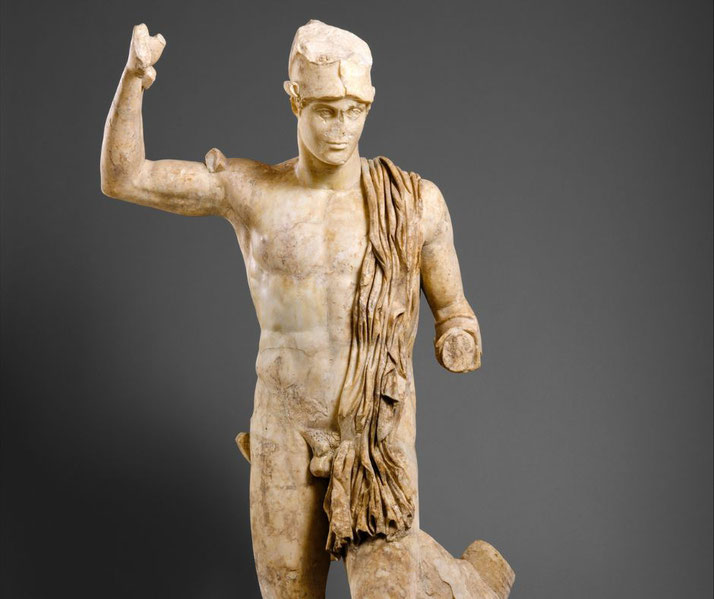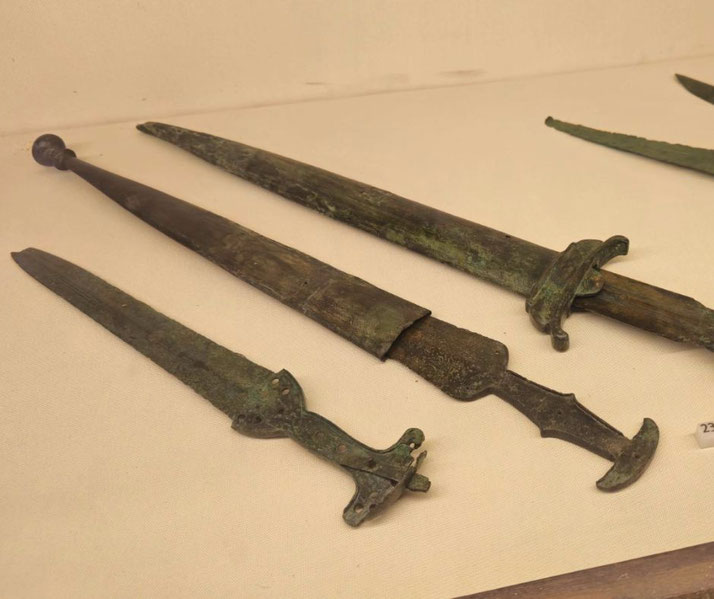The 6 most important battles of the Peloponnesian War

The Peloponnesian War unfolded as a prolonged and punishing conflict between the Delian League, led by Athens, and the Peloponnesian League, dominated by Sparta.
The war spanned nearly three decades from 431 to 404 BC and involved ever-changing alliances and catastrophic defeats, alongside some very important tactical innovations.
Much of our understanding of the war derives from the detailed account written by Thucydides, who participated in the conflict and observed its internal dynamics firsthand.
According to what he described, here are the main turning points of the conflict...
1. The Siege of Potidaea (432-429 BC)
Shortly before the official outbreak of the war in 431 BC, Athens launched a siege against Potidaea, a former ally that attempted to rebel.
The city, located on the Chalcidice peninsula, controlled a key route linking northern Greece with the Aegean.
After issuing demands that Potidaea remove Corinthian officials and dismantle its walls, Athens faced defiance backed by Corinthian and Macedonian forces.
The Spartan assembly had promised to support Potidaea if it were attacked, a commitment that added to the climate of distrust and accelerated the march toward war.
Over a long period, Athenian generals Callias and Phormio directed efforts to blockade the city.
The siege became an early demonstration of the difficulty of enforcing imperial authority over distant allies.
Although the defenders surrendered in 429 BC, the campaign consumed manpower and drained the treasury, forcing Athens to divert funds earmarked for other operations.
Eventually, the fall of Potidaea failed to deliver any lasting strategic advantage. For other Greek states, the operation appeared excessive and aggressive.
Sparta’s failure to act during the siege added to the growing sense of mistrust and confirmed that Athens had begun to overreach its authority.

2. The Battle of Delium (424 BC)
In 424 BC, the Athenians launched a campaign into Boeotia with the intention of building a forward base at the sanctuary of Apollo at Delium.
Hippocrates led the force, hoping to pressure Thebes and destabilise its alliances.
The Athenian army, which had fortified the site, had not yet completed its withdrawal, giving Boeotian forces the opportunity to strike.
As the Boeotian army advanced, Pagondas introduced a significant innovation in hoplite tactics.
He deepened the right flank of his phalanx and coordinated cavalry movements to strike at key points in the Athenian line.
The resulting collapse of the left wing forced a panicked retreat. Many soldiers drowned in the Euripus Strait, and the survivors returned home in disgrace.
Among them was Socrates, who reportedly protected Alcibiades during the chaos, while Alcibiades had earlier saved Socrates at Potidaea.
In military terms, the battle demonstrated how rigid Athenian battlefield practices could be exploited.
For Boeotia, the victory validated its alliance with Sparta and reinforced its status as a regional power.
After Delium, Athens turned its attention back to naval supremacy, avoiding major land campaigns in central Greece for some time.
3. The Battle of Pylos and Sphacteria (425 BC)
During a resupply mission, Demosthenes decided to fortify the rocky headland at Pylos after storms forced his fleet to land.
The position lay on the western Peloponnesian coast and offered a strong natural harbour and a defensive advantage.
As Spartan forces attempted to dislodge the Athenians, a larger confrontation unfolded.
Eventually, over 400 Spartan troops, including 120 Spartiates, became trapped on the island of Sphacteria.
When the Spartan government offered peace after their soldiers were isolated but before the final surrender, the Athenian Assembly refused.
Cleon, eager to prove his military credibility, led a force to join Demosthenes. Their combined assault relied on light-armed troops, who harassed and outflanked the Spartans until they surrendered.
The use of archers and peltasts to neutralise heavily armoured hoplites marked a rare but important shift in Greek battlefield practice.
For the rest of the Greek world, the surrender of elite Spartans shattered long-standing beliefs about their invincibility.
In political terms, the victory strengthened the position of war hawks in Athens and increased public confidence in offensive operations.
However, the capture of Spartiates also created new expectations that future campaigns would yield similar triumphs.

4. The Sicilian Expedition (415-413 BC)
Poor intelligence compounded logistical challenges and sparked disputes over command that further contributed to paralysis.
As Syracuse strengthened its walls and called for help, Gylippus arrived to direct a counteroffensive.
Over time, the Athenian position weakened. Supply shortages and enemy numbers that were growing, combined with poor leadership, began to undermine the campaign.
In its final stages, the expedition collapsed. The fleet was destroyed in the Great Harbour, and the remains of the army, which was led by Nicias and Demosthenes, were hunted down and killed or enslaved.
Thousands of Athenian prisoners were thrown into the stone quarries of Syracuse, where they died in terrible conditions.
As a result, Athens lost tens of thousands of men and ships. The empire’s morale and authority suffered permanent harm.

5. The Battle of Cyzicus (410 BC)
After the disaster in Sicily, Athens was close to collapse. A brief coup by oligarchs in 411 BC further destabilised the city.
Despite this, three generals, Alcibiades, Thrasybulus and Theramenes, launched an effort to restore control over the Hellespont.
Their target, Cyzicus, offered access to vital grain supplies and a chance to break Spartan control of the sea.
In a carefully planned ambush, Alcibiades drew the Spartan fleet under Mindarus out to sea.
As the enemy pursued his decoy force, the remaining Athenian fleet struck from behind.
The Spartans were surrounded, their ships destroyed, and Mindarus was killed in the chaos.
A message sent to Sparta reportedly read, “Ships lost. Mindarus dead. Men hungry. What next?”
Following the battle, Athens re-established its position in the region and reopened supply lines.
Although the victory improved morale and brought temporary stability, the city still faced increasing money problems.
The Persian Empire, now supporting Sparta, ensured that the conflict stayed against Athens even after these battle successes.
6. The Battle of Aegospotami (405 BC)
During the final stage of the war, Lysander came back to lead the Spartan fleet with the complete support from Persian resources.
After he moved his forces to Lampsacus, he waited patiently for the Athenians to make a mistake.
The Athenian fleet, which was camped nearby at Aegospotami, sailed out each day to challenge him before returning to an exposed shoreline.
General Philocles reportedly ignored advice to move to a safer harbour, leaving the ships vulnerable.
On the fifth day, Lysander launched his attack. The Athenian sailors were caught off guard because they had left their ships unattended.
Most of the fleet was destroyed or captured, and thousands of Athenian sailors were taken prisoner.
Conon, one of the commanders, escaped with a few ships and warned the city of its fate.
In a severe show of force, Lysander reportedly ordered the execution of approximately 3,000 prisoners, although some ancient sources omit this claim and modern historians continue to debate its accuracy.
Shortly afterwards, Athens faced starvation, since the defeat had severed its grain routes and left it isolated.
Sparta imposed harsh surrender terms in 404 BC. The Long Walls were taken down, the fleet reduced, and Sparta put a pro-Spartan government in place.
With this, the Peloponnesian War ended, and Athens lost its position as the leading sea power in the Greek world.
What do you need help with?
Download ready-to-use digital learning resources
Copyright © History Skills 2014-2025.
Contact via email
With the exception of links to external sites, some historical sources and extracts from specific publications, all content on this website is copyrighted by History Skills. This content may not be copied, republished or redistributed without written permission from the website creator. Please use the Contact page to obtain relevant permission.





